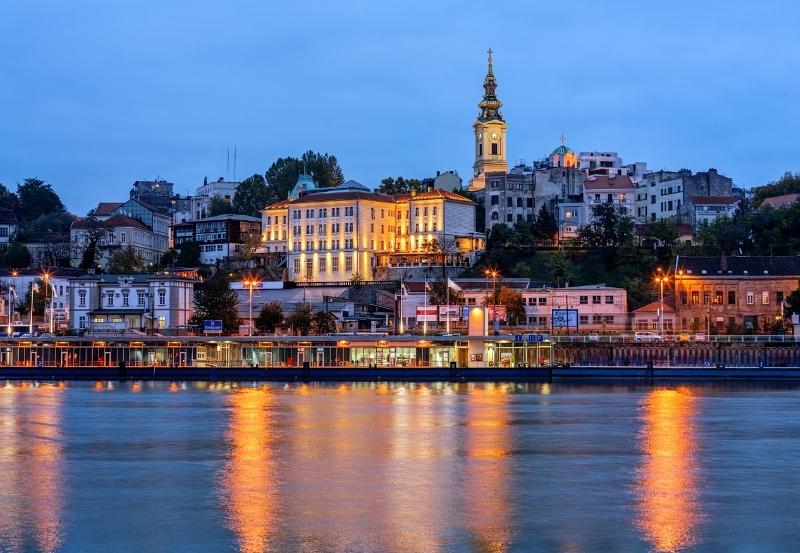The Serbian metropolis Belgrade with its more than 1.3 million inhabitants, is one of the most popular travel destinations in Eastern Europe.
Of course, it has not achieved this status without reason, because here you can expect a lot of historical sights. Serbia’s capital is also known worldwide for its nightlife.
By the way, in the national language, it is called “Beograd”. As in many other cities in the Slavic language area, this name also has a meaning. “Beo” is the Serbian word for “white”, and “Grad” means something like “city”. This means that Belgrade or Beograd translates to “white city”.
In this post, we’ll tell you why you should definitely plan a trip to Belgrade and everything that awaits you there. We are sure that you will not regret visiting this stunning and breathtaking city in the middle of the Balkans.

Where is Belgrade located?
The capital of Serbia is located in the region of Central Serbia. The Serbian metropolis is crossed by two rivers – the Danube and the Sava.
Both rivers have been navigable and used for commercial traffic for many centuries. They have earned Belgrade various nicknames such as “Gate of the Balkans” and “Gateway of Central Europe”.
Belgrade is easily accessible both by plane and by bus. The Nikola Tesla Airport is served by numerous European cities. If you are looking for a cheap flight to Belgrade, Skyscanner will help you!
However, if you are already in the Balkans or in one of Serbia’s neighbouring countries, a trip by bus will be much cheaper. Thanks to platforms like Omio, it is quite easy to find a bus ride from any city to Belgrade.
What is the weather like in Belgrade?
The climate that awaits you in the capital of Serbia is continental. This means that you will find the usual 4 seasons here, as in many parts of Europe.
In spring, you can expect pleasant temperatures. Especially from April on, the thermometer shows values where you can leave your winter clothes at home. Until deep into March, however, you may still see some snow.
In summer, it gets pretty hot in Serbian city. In the morning, the temperatures are still pleasant, but in the day, they rise to values significantly above 30 °C. Additionally, there are numerous thunderstorms in the city of about 1.3 million inhabitants at this time of year, especially towards evening. Of course, Serbia is also an amazing place to visit in summer, but there are some way better summer destinations in Europe.
Autumn is fortunately not as hot as summer. Moreover, during this season it does not rain as often as in the previous one. For this reason, autumn is the best time to plan a trip to Belgrade. However, temperatures start to drop from November onwards, and the weather slowly turns into winter.
Winter is by far the coldest season. The thermometer shows temperatures around 0 °C in winter. The sky is regularly full of clouds and snowfalls regularly.
What interesting sights can you visit in Belgrade?
Kalemegdan Fortress
This fortress is one of the sights you must put on your bucket list. Throughout the history of Belgrade, this fortress has been the scene of numerous battles. Today, however, the chance that you will unintentionally get involved in a battle is relatively low.
The castle is surrounded by a beautiful park, where the locals like to relax. It is also worthwhile for you to spend some time here and stroll through Kalemegdan Park. Especially the view of the confluence of the Danube and Sava rivers is one of the most impressive natural motifs in the largest Serbian city.
Church of St. Sava
This church is, so to speak, the landmark of Belgrade and accordingly dominates the skyline of the Serbian capital. What Hagia Sophia is for Istanbul, St. Sava church is for Belgrade.
In total, this structure is 79 meters high – which, by the way, makes it even the largest Orthodox church in the entire Balkans. Before the Church of St. Sava was built, the Alexander Nevsky Cathedral in the Bulgarian capital Sofia held this title.
This Orthodox church was built on the place where the Ottomans had burned the remains of St. Sava towards the end of the 16th century. However, the church’s completion took place only a few centuries later. The works in the interior have not been completed until today.
Knez Mihailova
The centre of social interaction is Knez Mihailova. This is a beautiful street in the centre of the city. You can meet lots of different people there and find different stores.
You can discover everything your heart desires here, from small and cosy cafés to lively bars and modern boutiques. Walking from the beginning of Knez Mihailova (just opposite Kalemegdan Park) to its end, you will understand why it is unofficially called the Serbian Champs-Élysées.
What should you eat in Belgrade?
During your vacation in Serbia, you will quickly notice that typical Serbian dishes are similar to many Turkish foods.
This is mainly because Serbia and many other parts of the Balkans were part of the Ottoman Empire. This led to the fact that you can get delicious delicacies like baklava or börek in every bakery.
One of the most popular dishes you should try in Serbia’s capital was cevapi. These are elongated meatballs traditionally made from beef or lamb. Serbians often serve cevapi in pita bread.
So you are now well-prepared for your trip to Belgrade. We promise you that you will fall in love with the most populous city in the entire Balkans within a short time. According to statistics, the Serbian metropolis is one of the most visited cities in Eastern Europe.
You will never regret a trip to Serbia’s capital and its incredible architecture and relaxed citizens. A journey to Belgrade is always full of unforgettable experiences, and you will easily make new friends here.
